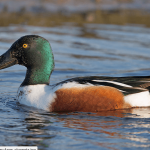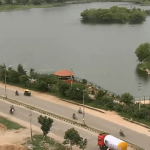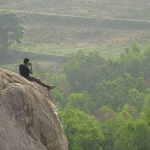
By Anuksha Dey
If you have been planning to go bird watching in Bengaluru, now is the perfect time. “This is the winter season… anytime you step out is a good time for birding,” says Dr Krishna MB, a zoologist with a doctorate in bird ecology. But if you’re wondering where and how to start, this quick guide by Residents Watch will help you navigate this evocative journey.
The birds of Bengaluru
Around 340 species of birds have been recorded in Bengaluru so far. Though the population of birds has dropped over the years, the city still boasts of a rich avian biodiversity. There are many different kinds of habitats that have both migratory and resident bird species inhabiting them. Making their temporary stay more welcoming is the availability of lakes, forests, agricultural fields, marshy wetlands, parks, gardens and grasslands.
Lakes and Wetlands
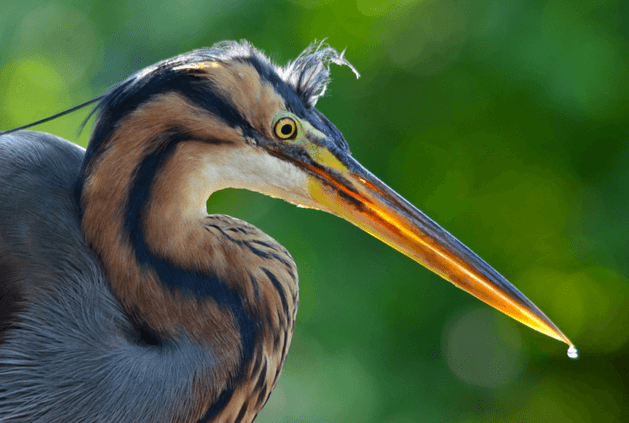
Water and wetland birds account for a good 40% percent of the city’s bird species. Less than a twentieth of the land area accounts for lakes and wetlands. “The birds are literally packed in these spots and the lakes are the best places to see them,” says Dr Krishna. South Bengaluru has Madiwala, Lalbagh, and Puttenahalli lakes, among others, while North Bengaluru has Hebbal, Jakkur, and Rachenahalli, among others. East Bangalore has Agara, Kaikondrahalli, Kasavanahalli, Saul Kere, Hoskote, Varthur, and much more.
A visit to any of these water bodies could let you witness many herons like the Pond, the Purple or the Grey, and at least one of the egrets, like the Little or the Cattle, Little Grebe, Coots, Moorhens and Swamphens. On the vegetation surrounding the lakes, you can see any of the Drongos, and the many Starlings and Mynas that are found in this city.
Gardens, parks and wooded campuses
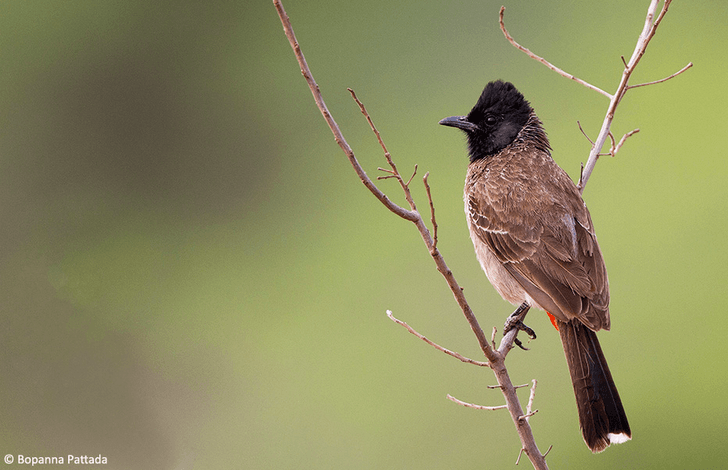
The proximity of gardens and parks makes them especially attractive to start looking for birds. Our home gardens and nearby “woodland” areas often attract Tailorbirds and small birds like Sunbirds and the larger Bulbuls. Not to mention, the much larger Koels and crows. As you move into larger and taller green spaces, you begin to see and hear more bird calls. “The Warblers, the Tits, and the Flycatchers are quite active birds with attention-grabbing calls, making them especially good to spot and watch,” says Dr Krishna, who is also one of Bangalore’s most experienced and revered bird watchers. The two major park areas, Cubbon park and Lalbagh, have flowering shrubs and fruiting trees which attract a variety of birds.
Other habitats
There are other habitats like the agriculture fields, both dry land and wetland, forests, rocky areas, grasslands which can be visited for bird watching. The open country has its own combination of varieties which you can explore as you gain more experience.
The migratory birds of Bengaluru

During the winter, birds from the north fly south to Karnataka. Birds start migrating from temperate zones to tropical zones in August and reach Bengaluru by March. March to October is an attractive period for bird watchers as this is the time to spot a number of exotic migratory species in the city.
For Abhijna Desai, who has been birdwatching for 15 years, her most evocative experience was when she came across a group of over 500 Rosy Starlings. These birds are winter migrants that move in hundreds from Europe to Southern India. She saw them for the first time in Mysore followed by another encounter at the Gandhi Krishi Vigyana Kendra (G.K.V.K) campus in Bengaluru. “The sight of them makes my heart fill up,” she says. “It makes me feel like I am so minuscule and insignificant in this mighty storm. They fly in formations; so when one is tired of the headwind, he moves back and another covers him. If only humans cared for each other that way.”
Start in your balcony or garden
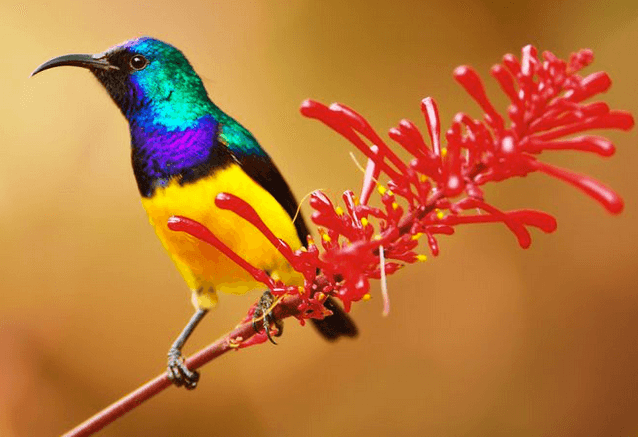
Photographer Radha Rangarajan says the best place to start bird watching is your balcony. “If not anything, you will see a couple of Sunbirds and Tailor birds apart from the regular crows, pigeons and black kites, even in the most crowded parts of the city.” Though she has travelled all over India to photograph birds, Hornbills are her favourites, followed by crows, spotted owlets, and the rare sparrows. Radha suggests observing the birds around you to see how they behave, even the most common ones. “Crows are one of the most fascinating bird species as they are highly social and intelligent. They have many group dynamics between them that are quite interesting to observe.” Balcony birding helps develop the eyes and ears for birdwatching in the wild. However, it is only when you step out of your house, that you will realise the rich biodiversity of Bengaluru.
What to carry on your birdwatching adventure
The most important thing is a notebook and a trusted ballpen or pencil. This will help you note down the description of the birds you see or sketch them out. “Sketching anything forces one to observe, and has been the age-old technique used in biology classes,” says Dr Krishna. Taking a pair of binoculars helps too. Beginners might want to start off with a basic pair before moving on to a professional pair from Nikon or Canon. Having a camera is an added bonus as it allows you to take a picture the moment you see a bird and look up the species later using apps like Google Lens. Downloading a bird watching app that helps you identify birds by their description, sound and photograph is also tremendously helpful. Radha suggests the Merlin app which can be downloaded free of cost on IOS as well as android.
For those who are keen on photography, Radha says a zoom lens is a must. A minimum of 300mm. For professional photographers, the options are endless, a prime lens or a super zoom lens (150 mm to 600 mm) will give you good quality photographs.
Arm yourself with knowledge
If you are really interested in bird watching, you might want to read up on it. Salim Ali’s Book of Indian Birds remains the best place for birdwatchers. Dr Krishna says, “The reason I like this book is that it has a lot of readable text which newer field guides do not have.” The modern field guides are useful, and they are all well illustrated, which makes them quite amenable to be carried around and used when you are out looking for birds. These field guides just enable you to know what it is that one is looking at. There is a lot of online and printed material which would enable you to know about birds themselves, their history, and their lives and migration patterns.
Join a birdwatching group
If you are new to birdwatching, having an experienced person to guide you is helpful. Group birdwatching has been going on in Bengaluru from the early 1970s, and it is always easy to learn to spot birds in a group. What was started as the informal BirdWatchers Field Club of Bangalore way back in 1972 with regular second Sunday outings, has now blossomed with more interested people joining and organising many more field get-togethers. The monthly second Sunday outings continue in Lalbagh’s Glass House at 7:30am. The group also used to have walks at Hebbal Lake on the first Sunday and at other places on the third and fourth Sundays of every month before the pandemic. Though they have restarted the meetings at Lalbagh, other outings are yet to be resumed fully. These bird watching activities are informal and do not require any membership fees or prior registration.
Pro tips for beginners
Dr Krishna advises beginners to look out for a moment in contrast to just the form of a bird when you are out spotting them. “Often, you will hear the birds before you see them,” he says. “So, keep your eyes and ears open.”
Senior birdwatcher U Harish Kumar, who has been birding for 35 years, says a good birdwatcher must be like Sherlock Holmes. “Observe the minutest details,” he says. “You have to remain silent and try to observe every detail, while making copious notes of what you see.”
“My top tip for a first-time birdwatcher is to observe with your eyes, enjoy, and make notes.” says Abhinja. “Watching them with our actual eyes instead of through a camera, makes a huge difference. Binoculars and books have taught me more than cameras and the internet.”
Photographer, writer and wildlife enthusiast Radha Rangarajan reminds beginning birders to blend in and be respectful of the surroundings. She says birds are skittish and a birdwatcher must always remember to keep their distance. “Do not disturb birds, if they are feeding their chicks, or are nesting,” she cautions. “Even if there is a hunt going on, do not disrupt what is happening. Stay away. Be a bystander. Never become part of the scene. You shouldn’t think of rescuing the animal. You should just let nature take its course.”




